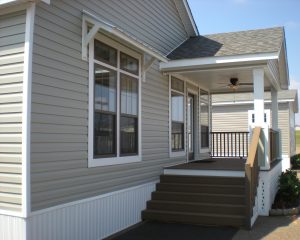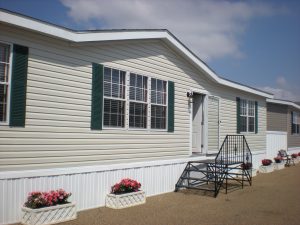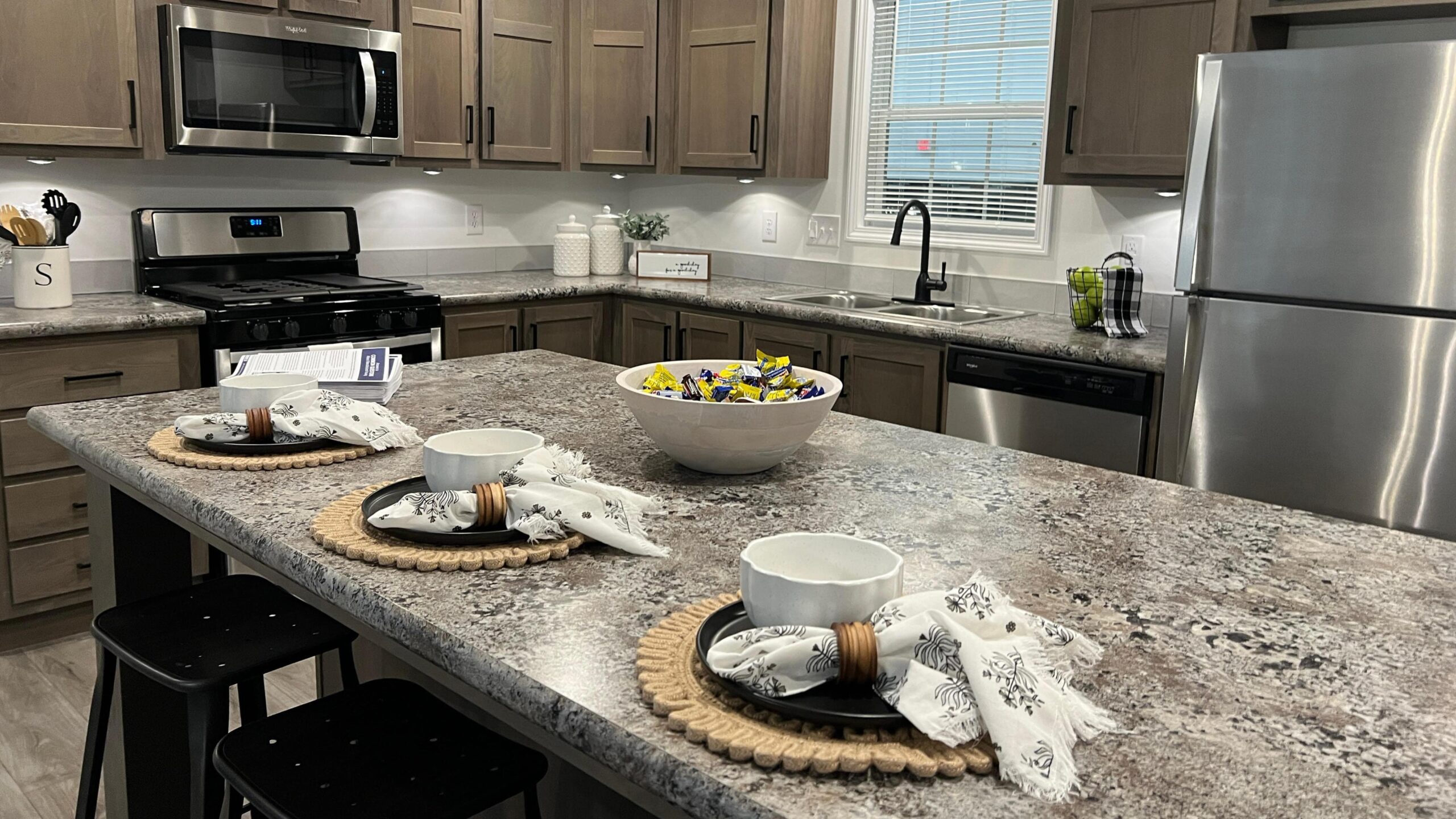This fantastic home maintenance calendar comes to us from the folks over at Factory Built Owners of America. It is a member-driven nonprofit organization that represents the common interests of owners and prospective owners of manufactured homes.
A Home Maintenance Calendar for You
August
• Service and clean the furnace. Have your furnace inspected and cleaned by a professional, especially if you have a gas furnace. It’s better to find out now that you have a furnace problem rather than in the dead of winter.
• Do you have a fireplace? Inspect fireplace stacks and have chimneys cleaned. Fireplace stacks and chimneys are often overlooked in a maintenance schedule, but it is very important to keep these clean and free of debris. Otherwise, they can be a fire hazard.
September
• Test smoke detectors, and replace batteries. Most factory-built homes have two smoke alarms. I recommend having one smoke detector in each bedroom and at least one carbon monoxide detector.
• Winterize house and pipes. Time to make sure that all outside pipes are wrapped. If a home is going to be vacant for the winter, there are a handful of critical tasks to ensure the mobile home is properly winterized. This includes draining the water heater, blowing out pressure lines, and pouring an antifreeze type solution in the toilets and drain traps.
October
• Change the A/C filter.
• Check mobile home steps, porches and decks. These need to be in good repair and stable for the upcoming winter months. Because these areas get very slick when wet or icy, consider installing an anti skid type material on them.
November
• Clean carpets. Get ready for the holidays by cleaning your carpets. I prefer steam cleaning over shampooing because it leaves no residue.
December
• No maintenance this month. Enjoy the holidays!
January
• Change Air Conditioning (A/C)/furnace filter. Filters should be changed or cleaned at least every three months.
February
• Tighten toilet flange bolts. Toilets can become loose at the base and may leak past the wax ring causing extensive floor damage. Tighten the two bolts, usually covered by plastic dome caps at the base of the toilet, being careful not to tighten too tight or the toilet may crack.
 • Tighten tank bolts. There are typically 2 or 3 bolts that secure the toilet tank to the toilet bowl. If you can rock the tank back and forth it needs to be tightened. Carefully tighten the nuts on the bolts that go from the tank bottom thru the holes in the base being careful not to over tighten or it may crack the bottom of the tank.
• Tighten tank bolts. There are typically 2 or 3 bolts that secure the toilet tank to the toilet bowl. If you can rock the tank back and forth it needs to be tightened. Carefully tighten the nuts on the bolts that go from the tank bottom thru the holes in the base being careful not to over tighten or it may crack the bottom of the tank.
• Replace flapper valve. Many households use disinfect tablets to keep the toilet tank clean, but these tablets damage the rubber valve over time, making is necessary to replace it. These valves are cheap, and a bag of them can be bought from any of the big hardware stores for a few bucks. To replace the valve, pull the lid off the tank. Looking down you will see a black rubber valve with a little chain connected to it. Lift the valve out of the tank with the chain and replace the old valve with a new one.
• Tighten drain pipes and water connections under sinks. Reaching under the sink, follow the drain pipes from the base of the sink, and tighten each nut that connects the pipes and the traps together. Follow the hot and cold water lines up to the base of the faucets and tighten the nuts that secure the lines to the faucet with your hand. It’s so simple – no tools needed.
• Clean faucet aerators. These are the little screens that are on the end of each faucet. They simply unscrew. Pull them apart and soak in CLR, Lime Away or similar product to clear away lime deposits. Or buy a replacement at your local hardware store.
March
• Remove floor registers and vacuum ducts, then disinfect. Most factory-built homes have the heating and air conditioning vents in the floor. Dirt, debris and other objects can fall into the ducting through the floor registers. Once a year, remove the 2 screws from each vent and remove the registers. You will be surprised at what you find, especially if you have children. Remove any objects, and vacuum out the dirt. Take a spray bottle with a mixture of water and bleach, and spray into the ducts to kill any germs. While the vent is off, check the vertical riser pipe for any leaks. Seal any leaks with aluminum duct tape.
April
• Change the A/C filter.
• Inspect roof, seal stacks, edges, and seams. Inspect the roof of your mobile home once a year. Remove any loose sealer, and then paint on a roof patch product, or use an aluminum roof coating. Metal roofs should be completely re-coated every few years with either aluminum roof coating or white coating. Use aluminum coating around stacks and seams first, wait a couple of days to give the coating a chance to set up, and then paint the entire roof with white coating. This not only protects against water leaks, but helps save on energy bills. Inspect shingle roofs making minor repairs with black roof patch. Purchase these coatings thru a factory built home supplier like Atlas Supply or a large national supplier like Home Depot.
May
• Inspect the seal of exterior doors and windows and exterior mobile home siding. Caulk exterior doors, windows and exterior hardboard siding. Use clear silicone if you will not paint or a paint-able caulk if you will. Caulk small holes or cracks of vinyl siding with silicone, or replace sections of siding that are heavily damaged.
• Inspect and tighten screws in your metal siding. Be sure to tighten any ¼” hex screws that are coming loose on your metal sided home.
June
• Flush water heater. Many cities have very hard water causing hard water deposits to form in your water heater. This leads to inefficient water heating making it necessary to flush the water heater. Flushing the water heater should be done by a professional. But if you are doing it yourself, be sure to follow manufacturer’s instructions.
• Inspect foundation blocking. If your home sits on concrete blocks directly on the ground with no base pad or concrete, your house will settle. This can cause structural damage to the home, and can cause doors and windows not to open or close properly. Look for cracks in the blocks; and look for signs of water passing under the home which can cause erosion leading to major settling problems in your home.
• Level home. Once a year, you should check to make sure the mobile home remains level. If it is out of level, be sure to have it corrected before your home becomes damaged.
July
• Change the A/C filter.

• Inspect and repair underbelly. While checking the underbelly, patch any holes you find with an underbelly material which can be bought from Atlas Supply. Take a piece a little larger than the hole, use spray-on contact cement to secure the patch.
• Inspect A/C and Heating crossover ducts. Multi-section homes have a 10” or 12” crossover duct that connects the ducting systems underneath your home. Keep these taped, connected and off the ground.
• Inspect and repair your mobile home skirting. Whatever type of skirting you have, keep it maintained. It is important for energy efficiency and to keep animals from living under your home.
With routine maintenance, a factory-built home will last as long as any site-built home. I hope this article helps put you on a schedule to keep your home in tip-top shape for years to come.
Factory Built Owners of America is a nonprofit membership association whose mission is to represent the common interests of owners and prospective owners of manufactured homes in acquiring, maintaining and improving their manufactured homes.
Factory Built Owners of America offers educational programs and services related to the purchase, financing, maintenance and improvement of members’ factory-built homes.
For more information about Factory Built Owners of America, contact:
Factory Built Owners of America
PO Box 100056
San Antonio, TX 78201
Email: info@factorybuiltowners.org
Phone: (866) 764-5505
https://www.factorybuiltowners.org














